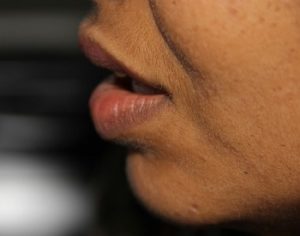- MN ABE Connect
- Archive
- Finally! Helping ESL Learners with Syllable-Final Consonant Articulation
Finally! Helping ESL Learners with Syllable-Final Consonant Articulation
Suzanne McCurdy, SPCLC Consultant / Hamline FacultyDo your learners delete syllable-final consonants? Do you hear “how” when a learner is talking about his “house”? Does your learner report having a “co” when you know she must have a “cold”? Final consonants and final clusters are essential to intelligibility in English, yet working on them with lasting success in class can be challenging. But it doesn’t have to be challenging – it can be fun!
Several teachers welcomed me into their classrooms to work with their Karen, Karenni and Burmese beginning level ESL learners on syllable-final consonant inclusion. We found a fun and effective way to work on learners’ ability to successfully articulate syllable-final consonants that drew upon several existing ESL/EFL pronunciation methods and speech language pathology processes.
During my time with the learners, I implemented lesson plans that were 30 – 45 minutes in length, but in this article I will focus on individual elements of the process and how a teacher might integrate one or more of those components into existing classroom routines.
Buy-in
Learners are much more likely to participate and be intrinsically motivated if the teacher can create buy-in. We did this by first discussing what pronunciation challenges the learners feel they have, and then moved to the issue of syllable-final deletion in particular. We explained why it is a problem for intelligibility, showing them examples of syllable-final deletion changing the meaning of a word (i.e. buy vs. bite). Use pictures, videos, native L1 speakers as translators – whatever you need to bring an a-ha moment to the learners and get them on board!
Explicit instruction
We should not expect a language learner to passively recognize key pronunciation features by being exposed to conversation or listening tasks. Nor should we hope that they understand the impact a mispronunciation may have on their intelligibility. Pronunciation features need to be explicitly identified for learners and strategies for improvement clearly modeled and practiced (Couper, 2003; Derwing, 2003; Derwing & Munro, 2005; Morley, 1991).
Mouth exercise
Mouth aerobics are used widely in theater to aid actors in controlling facial muscles, and similar activities have been adopted in English language courses. In this process, we used mouth aerobics not only for muscle control, but also as a way for learners to repeatedly practice VC and VCC sequences. See stage one of lesson plan linked below (Echelberger, 2013; Hardison & Sonchaeng, 2004; Maley & Duff, 1984).
Backward build-up
Backward build-up is a technique that comes out of the Audio-lingual Method and is also used in speech language pathology. Briefly, it is a technique in which the teacher and learners build, examine, or reveal a sentence or word from back to front. For example, the word “book” is revealed and pronounced accordingly:
k –>
ook –>
book
In my process, this allowed the learners to isolate the challenging element (the final consonant) and build up to more complicated utterances. It also strengthened learners’ awareness of our focus on final consonants.
Meaningful tasks
It’s important that learners are aware of intelligibility implications. Will a mispronunciation lead to a change in meaning or to an unintelligible utterance? A good way to do this is to build meaningful tasks into your lessons. In this process, learners were asked to discriminate between and articulate minimal pairs, for example, “bee” and “beak”, two English language words that if one neglects to identify the final consonant or lack of, the meaning changes (Celce-Murcia et al. 2010).
Don’t have 30 minutes to integrate a whole lesson?
Here are some ideas from your colleagues as to how one might integrate one or more of these elements into curriculum:
Carl says, “At the beginning of each unit, I use backward build up when introducing the key vocabulary words. It really brings the learners’ attention to the final consonants.”
From Ann: “I do mouth exercises using VC or VCC for 5 minutes every other day at the beginning of class, just to keep their minds focused on those consonants.”
“I bring this into fluency activities by doing a quick reminder with vocabulary words just before they start the activity,” says Tracy.
Adapt this process to your classroom and your learners’ needs. Most importantly, have fun with it!
Additional Resources
Newsletter Signup
Get MN ABE Connect—the official source for ABE events, activities, and resources!
Sign UpArticle Categories
- ABE Foundations/Staff Onboarding
- ACES/Transitions
- Adult Career Pathways
- Assessment
- CCR Standards
- Citizenship
- COVID-19
- Cultural Competency
- Digital Literacy/Northstar
- Disabilities
- Distance Learning/Education
- ELA
- Equity/Inclusion
- ESL
- HSE/Adult Diploma
- Listening
- Math/Numeracy
- Mental Health
- Minnesota ABE
- One-Room Schoolhouse/Multilevel
- Professional Development
- Program Management
- Reading
- Remote Instruction
- Science
- Social Studies
- Speaking/Conversation
- Support Services
- Teaching Strategies
- Technology
- Uncategorized
- Volunteers/Tutors
- Writing
